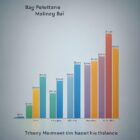What Are Low-Cost Healthcare Plans With Financial Aid?

Are you in need of affordable healthcare but worried about the cost? Look no further!
In this article, we will explore the world of low-cost healthcare plans with financial aid. By combining the benefits of both, these plans can help you access the care you need without breaking the bank.
Discover the various types of plans available, the eligibility criteria for financial aid, and how this aid can reduce your healthcare expenses.
Get ready to navigate the system and find the best low-cost plan for you!
Key Takeaways
- There are various types of low-cost healthcare plans and programs available, including Medicaid, CHIP, subsidized health insurance plans through the Health Insurance Marketplace, state-specific low-cost healthcare programs, and community health clinics and free clinics.
- Eligibility for financial aid is based on factors such as income level, citizenship or immigration status, and health-related criteria, and meeting these criteria is essential for receiving financial aid.
- Financial aid helps to reduce healthcare costs by providing subsidies or discounts on healthcare services, particularly for low-income individuals and families, thus preventing financial hardship.
- Resources for finding low-cost plans with financial aid include the Health Insurance Marketplace, Medicaid, community health centers, and non-profit organizations, providing various options for individuals in need.
Types of Low-Cost Healthcare Plans
If you’re looking for low-cost healthcare plans with financial aid, there are several types available to choose from. One option is Medicaid, a government program that provides healthcare coverage for low-income individuals and families. Medicaid eligibility varies by state, but generally, it’s available for those with limited income and resources.
Another option is the Children’s Health Insurance Program (CHIP), which offers affordable healthcare coverage for children in low-income families who don’t qualify for Medicaid. CHIP provides comprehensive benefits, including doctor visits, immunizations, prescriptions, and hospital care.
For individuals who don’t qualify for Medicaid or CHIP, there are subsidized health insurance plans available through the Health Insurance Marketplace. These plans offer financial assistance based on income and household size. The subsidies come in the form of premium tax credits, which lower the monthly cost of insurance, and cost-sharing reductions, which reduce out-of-pocket expenses like copayments and deductibles.
In addition to these options, some states offer their own low-cost healthcare programs for residents who don’t qualify for Medicaid but still need affordable coverage. These programs vary by state and may have different eligibility criteria and benefits.
When considering low-cost healthcare plans with financial aid, it’s important to research and compare the options available in your state to find the plan that best meets your needs and budget.
Eligibility Criteria for Financial Aid
To determine if you’re eligible for financial aid, certain criteria must be met when considering low-cost healthcare plans. These eligibility criteria vary depending on the specific financial aid program and the low-cost healthcare plan you’re applying for. However, there are some common factors that are typically considered when determining eligibility.
One important factor is your income level. Financial aid programs often have income thresholds that determine who qualifies for assistance. These thresholds are usually based on the federal poverty level and may take into account the size of your household.
Another factor that may be considered is your citizenship or immigration status. Some financial aid programs are only available to U.S. citizens or legal residents, while others may have more lenient requirements.
Additionally, some financial aid programs may require you to meet certain health-related criteria. For example, you may need to have a certain medical condition or be enrolled in a specific healthcare plan to qualify for assistance.
Meeting these eligibility criteria is essential if you want to receive financial aid for low-cost healthcare plans. By providing financial assistance, these programs aim to reduce healthcare costs and make healthcare more accessible for individuals and families who may not be able to afford it otherwise.
How Financial Aid Reduces Healthcare Costs
How does financial aid reduce healthcare costs for individuals and families? Financial aid plays a crucial role in alleviating the burden of healthcare costs for those who are unable to afford it. By providing financial assistance, individuals and families can access necessary medical services without having to worry about the exorbitant expenses associated with healthcare.
Financial aid programs often offer subsidies or discounts on healthcare services, making them more affordable and accessible. These programs are designed to target low-income individuals and families who may struggle to meet their healthcare needs due to financial constraints. By reducing the out-of-pocket costs, financial aid ensures that individuals and families can receive the care they need without facing the risk of financial hardship or debt.
To illustrate the impact of financial aid on healthcare costs, consider the following table:
| Situation | Healthcare Costs without Financial Aid | Healthcare Costs with Financial Aid |
|---|---|---|
| Individual with chronic illness | $10,000 per year | $2,000 per year |
| Family of four with low income | $20,000 per year | $5,000 per year |
| Senior citizen on a fixed income | $5,000 per year | $1,000 per year |
As the table demonstrates, financial aid significantly reduces healthcare costs for individuals and families, allowing them to access essential medical services without sacrificing their financial stability.
Resources for Finding Low-Cost Plans With Financial Aid
You can find numerous resources for locating low-cost healthcare plans with financial aid. One of the first places to start is the Health Insurance Marketplace, which is an online platform where you can compare and purchase health insurance plans. The marketplace offers a range of options, including low-cost plans that come with financial assistance. You can visit the website and enter your information to see what plans and financial aid you may qualify for.
Another resource to consider is Medicaid, which is a state and federal program that provides health coverage to low-income individuals and families. Medicaid offers low-cost or even free healthcare coverage to eligible individuals. You can check with your state’s Medicaid office to see if you qualify and to learn more about the available options.
Community health centers are also a great resource for finding low-cost healthcare plans with financial aid. These centers provide comprehensive primary care services, including preventive care, dental care, and mental health services. They offer services on a sliding fee scale based on income, so you can receive care at a reduced cost.
Lastly, non-profit organizations such as the American Cancer Society and the American Heart Association may have resources and information on low-cost healthcare plans with financial aid. They often provide support and guidance to individuals seeking affordable healthcare options.
Tips for Navigating the Application Process
Once you have gathered all the necessary documents, it is important to carefully review the application requirements before submitting your application for low-cost healthcare plans with financial aid. This will ensure that you provide all the necessary information and increase your chances of approval. To help you navigate the application process smoothly, here are some tips to consider:
- Read the instructions: Take the time to thoroughly read and understand the application instructions. This will help you avoid any mistakes or omissions that could delay the processing of your application.
- Fill out the application accurately: Provide accurate and up-to-date information on the application form. Double-check all the information before submitting to ensure there are no errors.
- Attach the required documents: Make sure to include all the required documents along with your application. These may include proof of income, identification documents, and any other supporting paperwork. Refer to the table below for a list of common documents required:
| Required Documents | Examples |
|---|---|
| Proof of income | Pay stubs, tax returns |
| Identification documents | Driver’s license, passport |
| Proof of residency | Utility bills, lease agreement |
| Social Security number or ITIN | Social Security card, ITIN letter |
| Proof of household size and dependents | Birth certificates, marriage license |
- Submit your application on time: Be mindful of the application deadlines and submit your application well before the due date to allow for any unforeseen delays.
Frequently Asked Questions
Are Low-Cost Healthcare Plans With Financial Aid Available for Individuals With Pre-Existing Conditions?
Yes, low-cost healthcare plans with financial aid are available for individuals with pre-existing conditions. They provide affordable coverage and assistance for medical expenses, ensuring access to necessary care and support.
Can I Still Apply for Financial Aid if I Already Have a Health Insurance Plan?
If you already have a health insurance plan, you may still be eligible for financial aid. It is worth exploring your options and speaking with a healthcare professional to determine what assistance is available to you.
How Long Does It Typically Take to Receive a Response After Applying for Financial Aid for Healthcare?
Typically, it takes several weeks to receive a response after applying for financial aid for healthcare. The time may vary depending on the specific program and the volume of applications being processed.
Are Low-Cost Healthcare Plans With Financial Aid Available for Undocumented Immigrants?
Low-cost healthcare plans with financial aid may be available for undocumented immigrants. It’s important to research and explore options specific to your situation to find the best plan that suits your needs.
Is There a Limit to the Amount of Financial Aid That Can Be Received for Healthcare Costs?
There is no limit to the amount of financial aid you can receive for healthcare costs. The goal is to ensure that you have access to affordable healthcare regardless of your financial situation.



